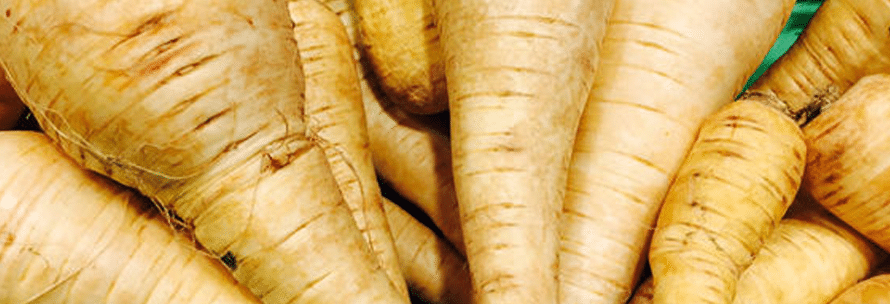Grow Your Own Christmas Dinner

Many of us wouldn’t think of looking any further than Tesco for our Christmas dinner meat, veg and all the trimmings, but by far the best way to get the freshest produce is to grow your own. Why not make a resolution to make your Christmas dinner full of homegrown produce next year? Here’s how:
Christmas Dinner MUST
Parsnips
The perfect Christmas dinner accompaniment!
Sow them: From March to May, sow the seeds in moist soil, spaced roughly 1 inch apart. Cover the seeds with a light layer of compost and mark the area with a label.
Grow them: Make sure the soil is moist, then in early June, spread the seedlings 6 inches apart, and remove the weeds around them. Water them regularly.
Store them: Lift the mature roots from October, and only harvest what you need as they are hardy and can stay in the soil over winter.
Cook them: Use a generous amount of oil to roast them, and sprinkle them with cumin. You can also blend boiled roots with butter to make parsnip puree or try using them in a soup with apples or pears.
Brussels sprouts
The eternal question do they belong on a Christmas dinner or not?
Sow them: Sow them in April, put the seedlings in a pot and grow them for planting in early June. Prepare the soil for the best results by adding lime to it.
Grow them: Plant the seedlings 24 inches apart, and protect them with fine netting. Remove the weeds and water them regularly, and be sure to support any tall stems.
Cook them: Try sautéing the sprouts with bacon.
Potatoes
Mash or Roast on your Christmas Dinner? Or both?
Some varieties of potato can be grown in winter, but April is the best time to plant most varieties. Plant them 8-inches deep in well-prepared soil or plant one in a large pot filled with multipurpose compost. Water them regularly throughout the summer. They can then be lifted and stored until late autumn, in a cool dry place.
Herbs
The stuffing essential, the Christmas dinner absolute must!
Sow them: Sow thyme seeds in April, in small pots filled with compost but don’t cover them over.
Grow them: Plant the seedlings in pots when they’re 4 inches tall, and put the young plants into bigger pots filled with compost. Gently pull out their growing points to create bushy plants. Plant them in the soil when they are established. You can grow sage, rosemary, and thyme together in a big container.
Store them: You’ll be able to harvest fresh leaves from April to December, and you can also dry bunches of stems with their leaves to use in the winter.
Cook them: Make sage and onion stuffing, mix thyme and butter to make a glaze for boiled vegetables, and crush garlic and rosemary to rub over the turkey before it goes in the oven.
Onions
Who doesn’t love roast onions on with your pigs in blankets for a Christmas dinner?
Sow them: Sow the seeds from February to April, and spread them thinly on a tray filled with multi-purpose compost. Put the tray on a warm, bright windowsill.
Grow them: When the seedlings are 4 inches tall, transfer them into trays of multi-purpose compost, and place them 2 inches apart. Plant them from April to June when the seedlings are well-established. In late summer, take out the bulbs and dry them until the bulb, roots and foliage turn brown.
Store them: Remove the roots and leaves and store the bulbs somewhere dark, cool, and dry.
Cook them: Roast whole bulbs until they are soft and creamy, use them in chutneys, or slice them and coat them in spiced batter to make delicious onion bhajis.
Christmas Dinner Maybe
Red cabbage
Sow them: Sow the seeds from late April onwards so they will be mature by late autumn. Put around 12 seeds in a 3-inch pot, filled with moist seed compost and lightly cover them. Put the pot on a warm windowsill.
Grow them: Plant the seedlings into 3-inch pots filled with multi-purpose compost. Plant them in the soil in early June, around 18 inches apart and cover them with netting.
Store them: Mature cabbages will be okay to leave in the soil for up to a month. When they’re ready, lift the plant, clear the soil from the roots and hang it upside down in a cool, dark place where it will keep for up to 1 more month.
Cook them: Sauté the cabbage with vinegar and brown sugar, or shred it into salads or coleslaw.
If you are interested in even more helpful tips and interesting articles. Check out our blog.








